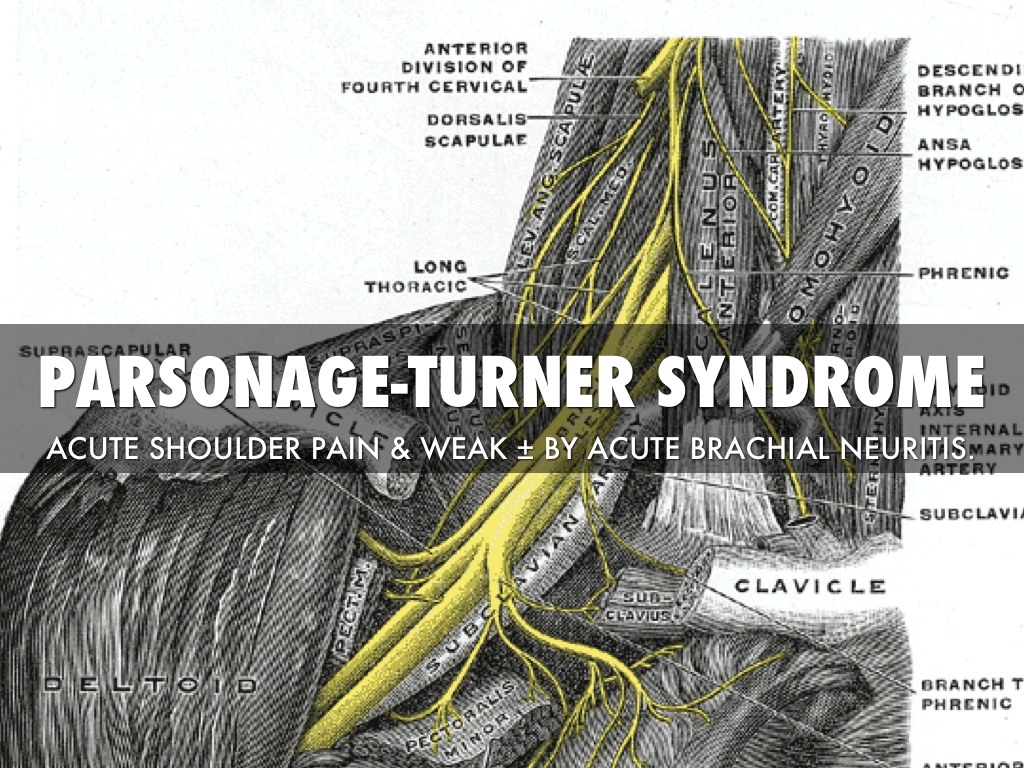
Parsonage Turner Syndrome, also called acute brachial neuritis, is painful condition of the shoulder and arm. Maurice Turner and John Parsonage published the first documented case in the Lancet in 1948. The pain comes on suddenly and is severe. It is burning in nature and radiates from the shoulder into the arm. Muscle weakness of the extremity follows soon after the pain. There is occasionally numbness and tingling that is associated with the disease as well. The pain is worse at night and causes sleep disturbance. Although no definitive cause of Parsonage Turner Syndrome is known, it is though to occur most frequently after a viral illness or an immunization suggesting an auto-immune etiology. Parsonage Turner syndrome is rare, occuring 1.64 times in 100,00 people and has a male predominance. The symptoms of Parsonage Turner syndrome are similar to those of a bulging or herniated cervical disc. Electromyography and Nerve Conduction studies can usually differentiate between them. MRI and CT scans of the neck and shoulder can look for other causes of the symptoms such as tumors. Treatment of Parsonage Turner Syndrome begins with pain control. This includes non-steroidal anti-inflammatory medications and narcotics. Medications such as Gabapentin and Pregabalin are useful as well. Physical therapy is a cornerstone of treatment, including TENS.